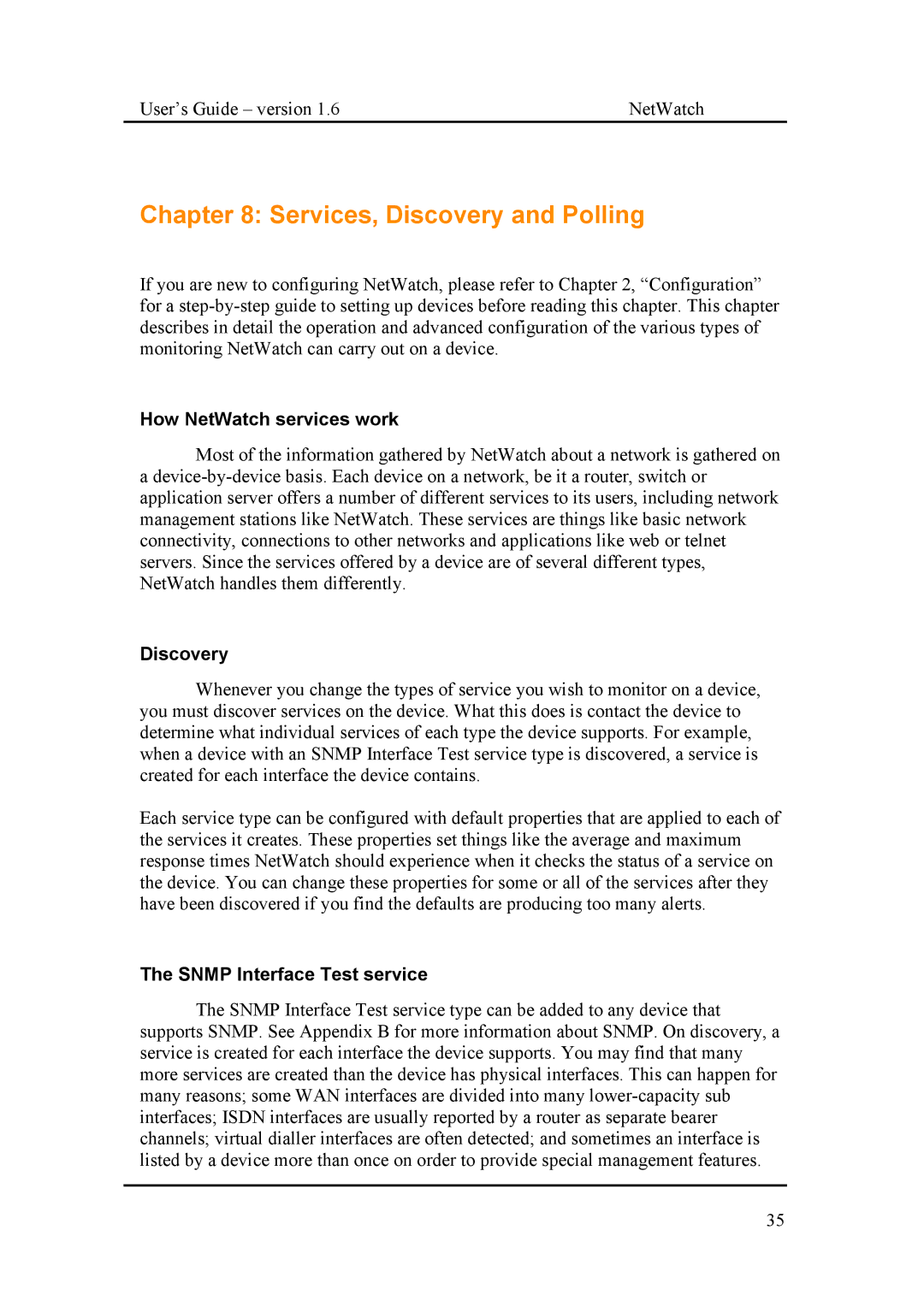User’s Guide – version 1.6 | NetWatch |
Chapter 8: Services, Discovery and Polling
If you are new to configuring NetWatch, please refer to Chapter 2, “Configuration” for a
How NetWatch services work
Most of the information gathered by NetWatch about a network is gathered on a
Discovery
Whenever you change the types of service you wish to monitor on a device, you must discover services on the device. What this does is contact the device to determine what individual services of each type the device supports. For example, when a device with an SNMP Interface Test service type is discovered, a service is created for each interface the device contains.
Each service type can be configured with default properties that are applied to each of the services it creates. These properties set things like the average and maximum response times NetWatch should experience when it checks the status of a service on the device. You can change these properties for some or all of the services after they have been discovered if you find the defaults are producing too many alerts.
The SNMP Interface Test service
The SNMP Interface Test service type can be added to any device that supports SNMP. See Appendix B for more information about SNMP. On discovery, a service is created for each interface the device supports. You may find that many more services are created than the device has physical interfaces. This can happen for many reasons; some WAN interfaces are divided into many
35
